Ancient Psychedelia: Alien Gods & Mushroom Goddesses
Online Book - Chapter 9, Page 139
Back to Online Book Mainpage / Next Page (Chapter 9, Page 140)
| In a treaty between the Hurrians and the neighboring Hittites, signed in 1400 BC, the names of several Vedic gods are mentioned, “the Storm-god, Lord of Heaven and Earth, the Moon-god and the Sun-god, the Moon-god of Harran, heaven and earth, the Storm-god, Lord of the Kurinnu of Kahat, the Deity of Herds of Kurta, the Storm-god, Lord of Uhušuman, Ea-šarri, Lord of Wisdom, Anu, Antu, Enlil, Ninlil, the Mitra-gods, the Varuna-gods, Indra, the Nasatya-gods, Lord of Waššukanni, the Storm-god, Lord of the Temple Platform (?) of Irrite, Partahi of Šuta, Nabarbi, Šuruhi, Ištar, Evening Star, Šala, Belet-ekalli, Damkina, Išhara, the mountains and rivers, the deities of heaven and the deities of earth.” (10) Bird goddess mushroom idols from Anatolia (11g) resemble ancient cave art from Three Rivers, New Mexico (3b), indicating ancient Turks were some of the early settlers in America. A limestone relief from 950-850 BC, depicts two men holding another man by both arms, and they appear to be pulling mushrooms out of the man’s head (23d). Another stele from 900-800 BC, depicts a king or deity holding what appears to be either a mirror, or a mushroom in his hands, and I would opt for the latter. At the base are several mushrooms mixed in with what appear to be hieroglyphics (23e). 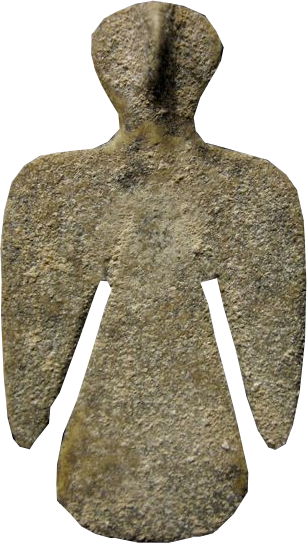 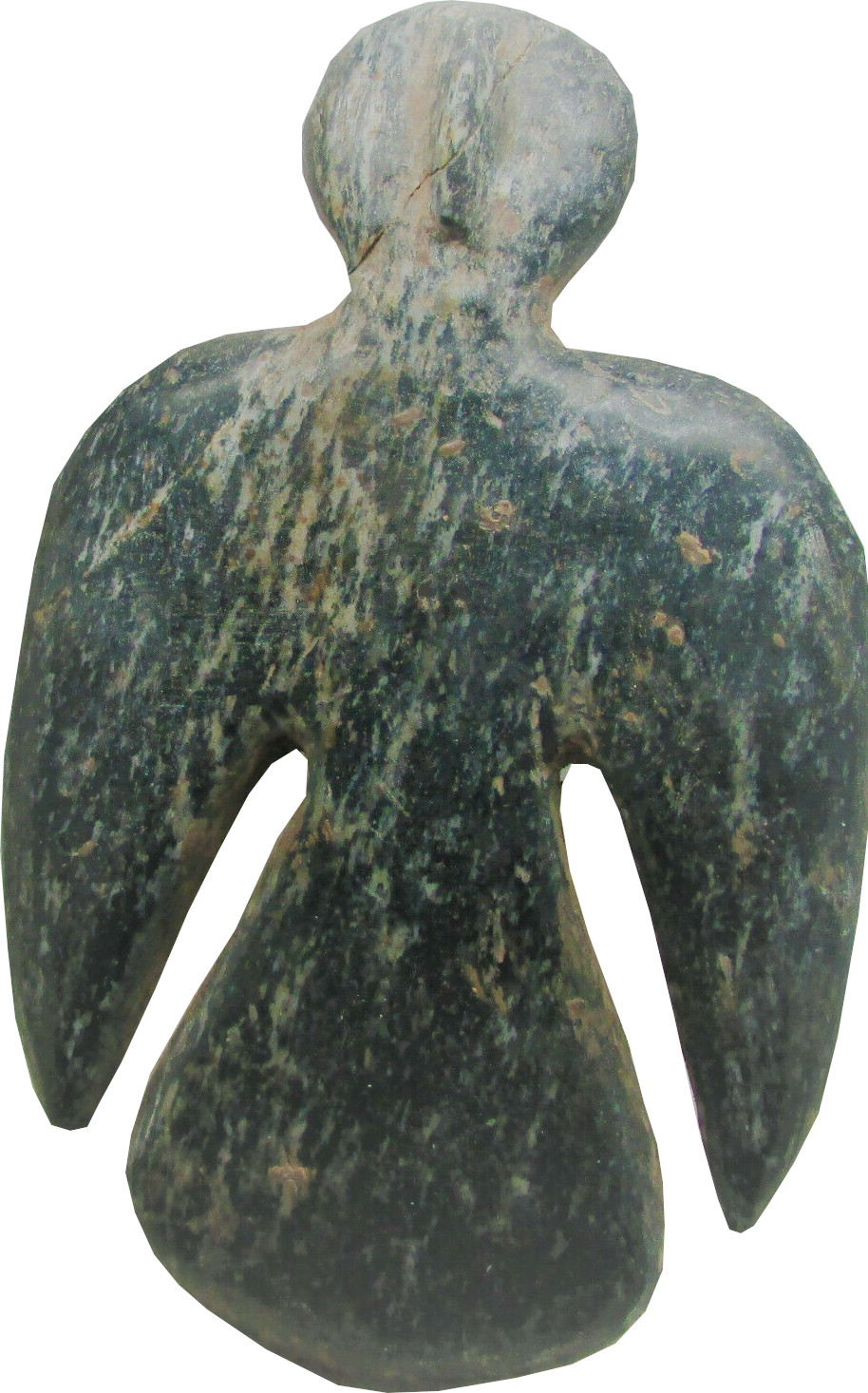 (11g) Anatolia Idol. 4000-3000 BC 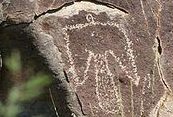 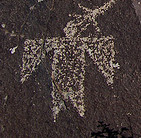 (3b) Three Rivers, New Mexico. c. 100-1300 AD Most of the gods and goddesses of ancient Syria had two names, one which was the main name and the other, an epithet. Raphael Patai, in the Hebrew Goddess, points out that this is a prosaic requirement for classical Semitic poetry, the point being the ability to express an idea in a variety of ways, or to say essentially the same thing, but with different words of expression. Baal also went by the name Hadd and Mot is also called Ghazir. A couple examples of this are given in the Hebrew Goddess and taken from the Ugaritic Tablets: “He cries to Asherah and her children, To Elath and the band of her kindred.” (ANET, 131) “And say unto Divine Mot. Declare unto El’s Darling Ghazir.” (ANET, 135) “Whose fairness is like Anath’s fairness - Whose beauty like Ashtoreth’s beauty.” (ANET, 144) (11) |
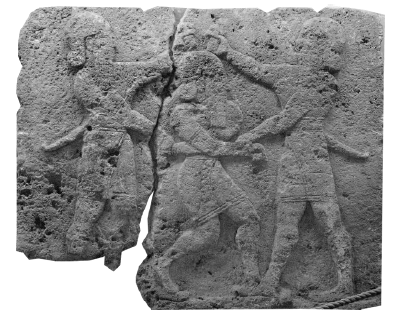 (23d) Limestone relief Museum of Anatolian Civilizations, Ankara c. 950-850 BC 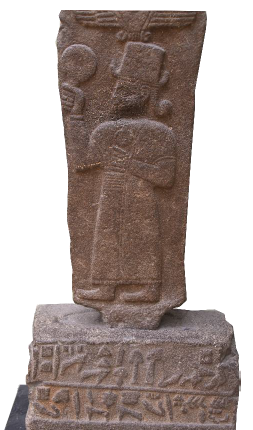 (23e) Assyrian stele c. 900-800 BC> (10) Occidental Mythology, p. 121; (A Rev 35-53); https://www.heritageinstitute.com/zoroastrianism/ ranghaya/suppiluliuma_shattiwaza_treaty.htm (11) The Hebrew Goddess, p. 55-56 |
Go Back to Page 138